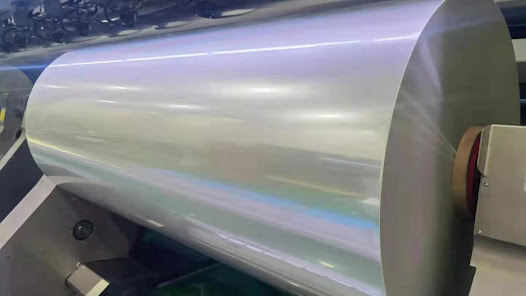Preserving Flavor and Nutrition: How Heat Sealable PET Film Enhances the Performance of Cooking Bags
In the current food sector, convenience and quality influence consumer preferences. Households and professional kitchens use cooking bags to prepare meals quickly and efficiently while preserving flavour and nutrition. Advanced packaging technology, particularly Heat Sealable Pet Film, is responsible for their success. While improving cooking bag durability and safety, this film also preserves the taste, texture, and nutritional content of the food.
Understand Heat-Sealed PET Film
Heat-sealable P-type of ET film is a polyester film that becomes tight when subjected to heat and pressure. Its molecular structure optimises thermal stability, mechanical strength, moisture, oxygen, and grease resistance. It is ideal for heat-resistant and food-safe applications, which are essential for cooking bag performance.
For leak-free cooking, the PET film's heat-seal layer keeps the bag closed. This robust seal maintains internal pressure, allowing food to cook evenly in its own juices without losing moisture or flavor. This preserves the meal's flavour, aroma, and nutrients.
Superb thermal resistance and cooking safety
The ability of heat-sealable PET film to resist high cooking temperatures without deterioration is outstanding. PET film maintains its stability at boiling, steaming, and oven-baking temperatures, unlike conventional plastic films that warp, melt, or emit toxic compounds. This stability allows the cooking bag to withstand high heat without damaging the food.
PET's inertness prevents chemical reactions between the film and food. Food safety depends on this trait, which prevents contamination and flavour changes during cooking. Heat-sealable PET film preserves the freshness of vegetables, meat, and seafood.
Preserving Taste and Aroma
Taste preservation is a significant benefit of heat-sealable PET film in cooking bags. Unsealed packaging lets volatile flavour components escape during cooking. PET film sealing prevents aromatic molecules and steam from escaping inside the bag. This technique brings out the natural flavours of ingredients and cooks them evenly.
Traditional cooking releases nutrients and flavors into the air or water. In contrast, food cooks in its own juices in a PET film cooking bag, similar to sous vide cooking. Tender, flavourful, and evenly cooked food with reduced salt and fat meets the consumer's desire for healthy, low-oil cooking.
Keeping Nutritional Value
Nutritional retention is another crucial aspect of modern cooking. Heat and oxygen affect several vitamins and minerals, notably in vegetables. Oxidation degrades vitamins A, C, and E; however, heat-sealable PET film prevents this degradation from occurring. While the enclosed environment prevents minerals from seeping into cooking liquids, the meal stays nutrient-rich.
PET film provides homogeneous cooking, preventing overheating and nutritional loss. This means PET-based cooking bags can offer more nutrients than open pots or pans.
Increasing Convenience and Sustainability
Heat-sealable PET film is convenient and environmentally friendly, in addition to being flavour- and nutrition-friendly. Strong seals on the film prevent leaks and spills, making storage, handling, and transportation easier. Marinate, freeze, and cook meals in one bag, saving containers and kitchen waste.
Environmentally, PET film technology has produced recyclable, thinner films that utilize less raw material while maintaining strength and functionality. This innovation promotes sustainability and the global shift towards eco-friendly packaging.
Conclusion
Heat-sealable PET film has made cooking bags essential in modern kitchens and the food sector. Its heat resistance, sealing strength, and barrier qualities make meals tasty, nutritional, and safe. This innovative material traps natural liquids, preserves sensitive nutrients, and prevents contamination, allowing consumers to enjoy the full sensory and nutritional benefits of their meal with incomparable ease. As technology advances, PET film will play a larger part in cooking and packaging, ensuring flavour retention, food safety, and sustainability.




Comments
Post a Comment